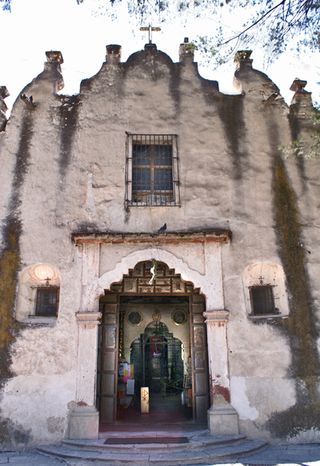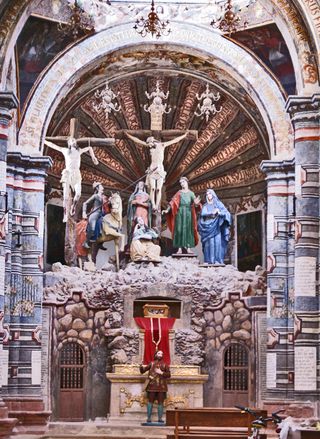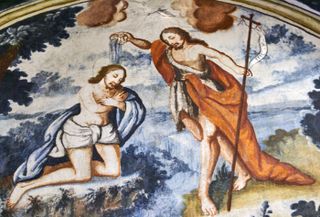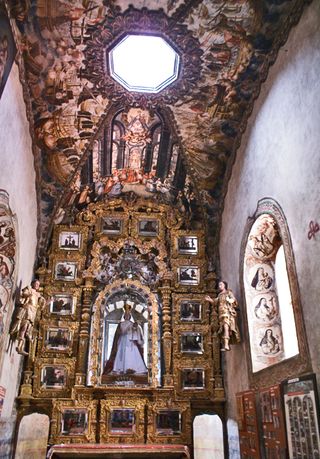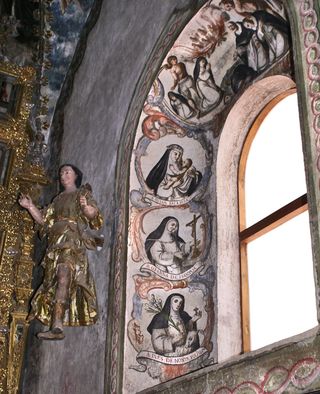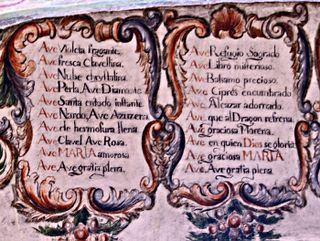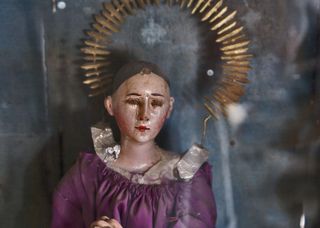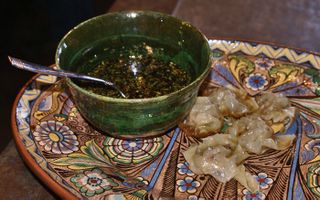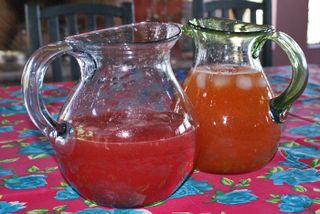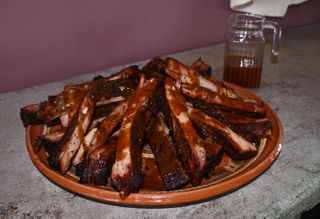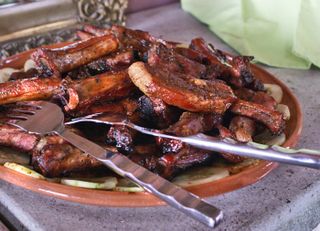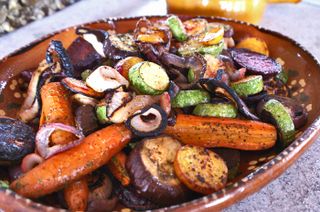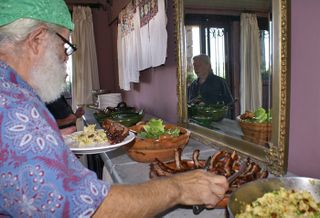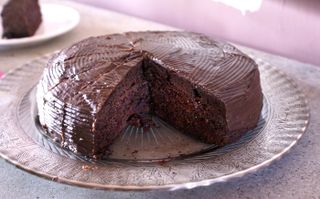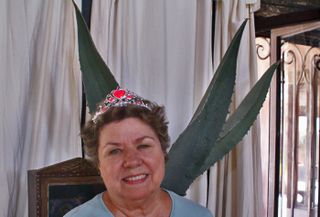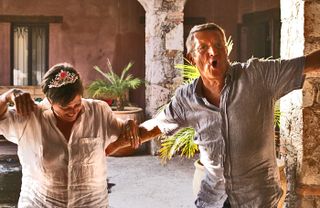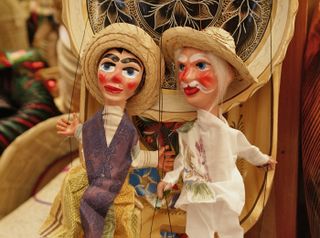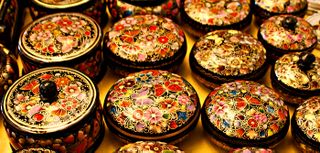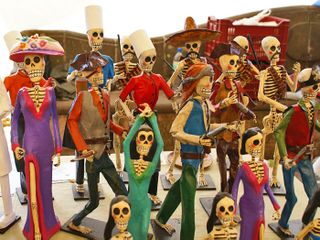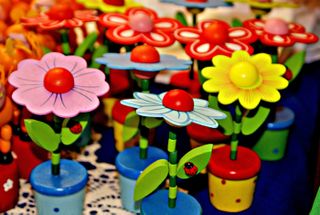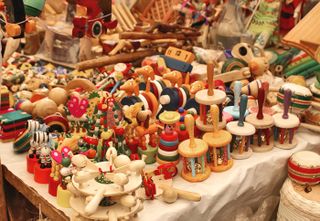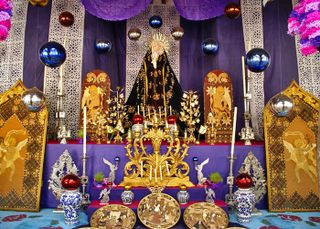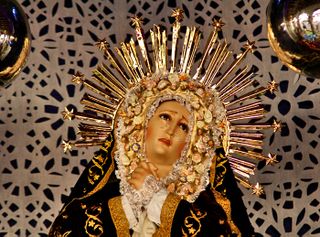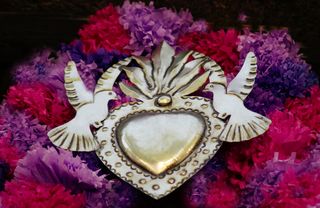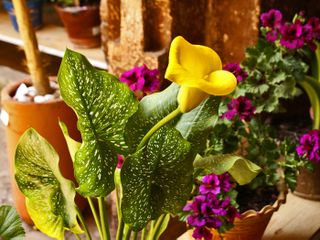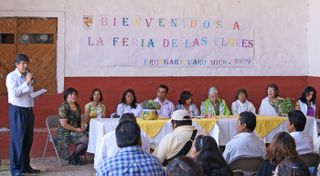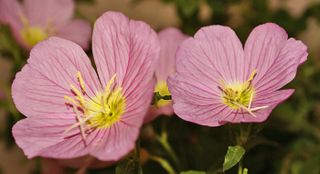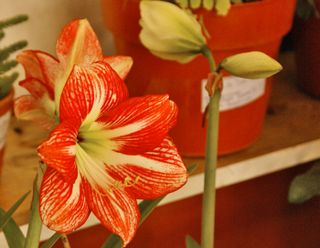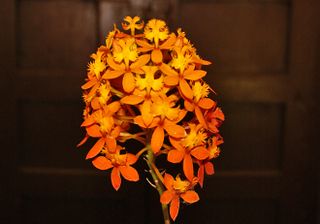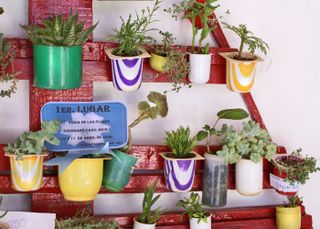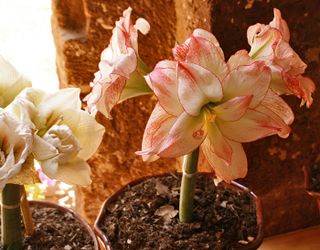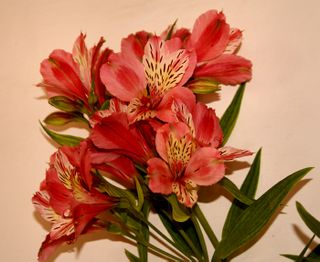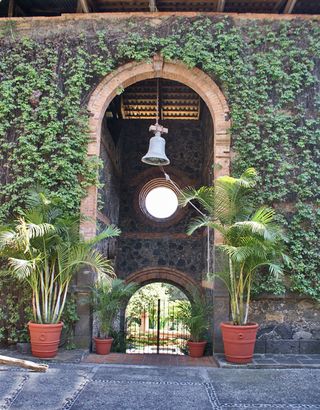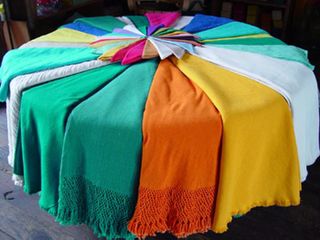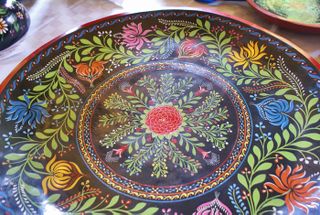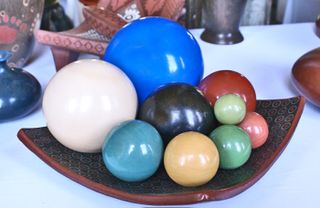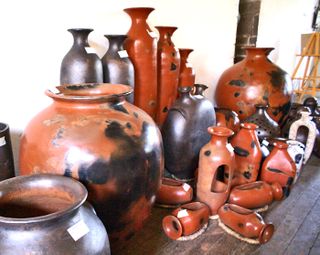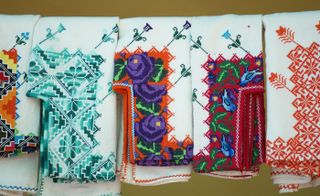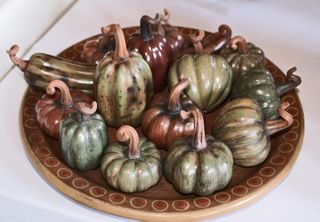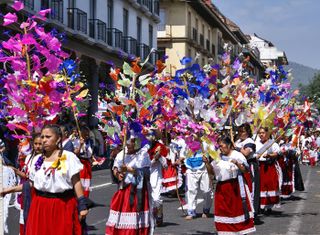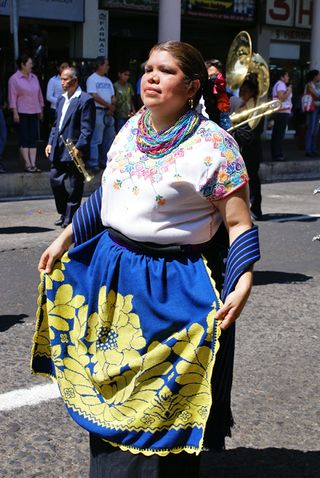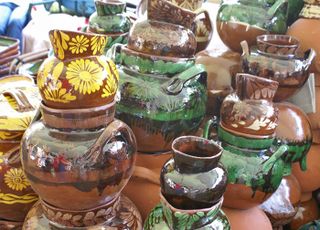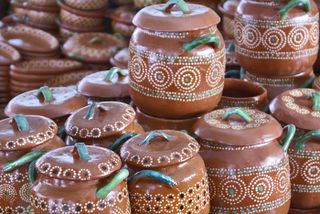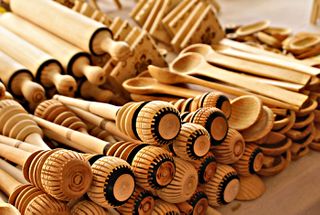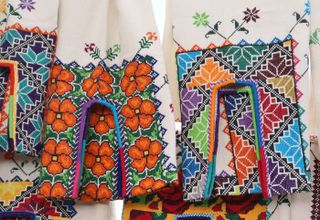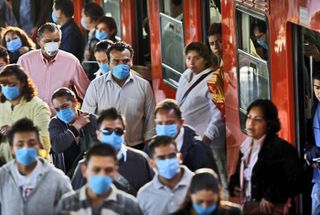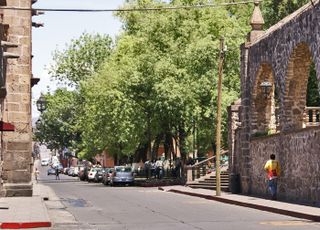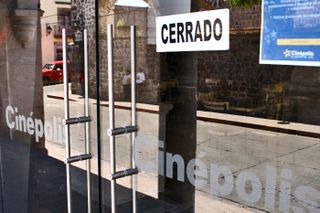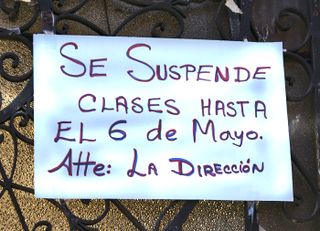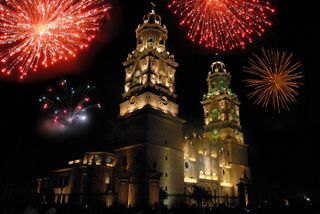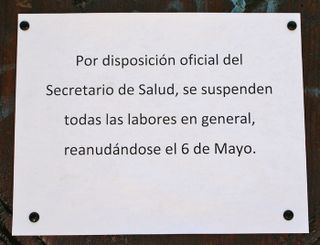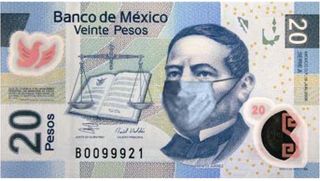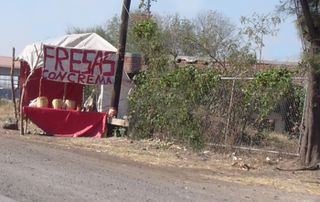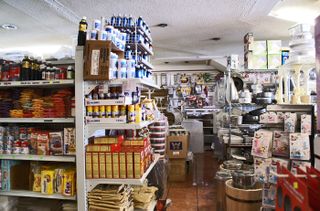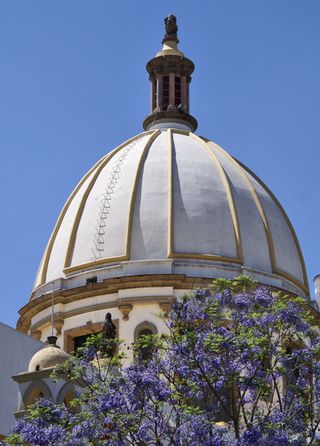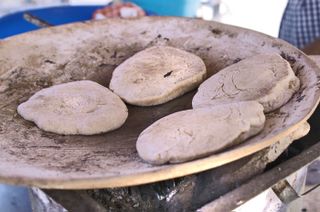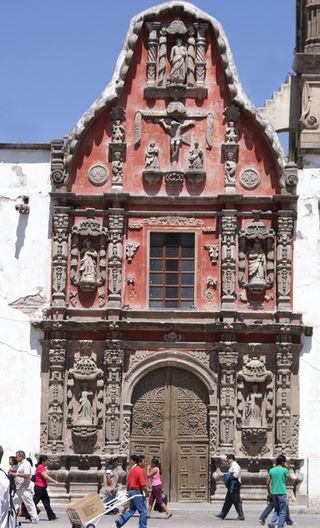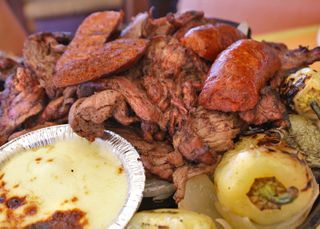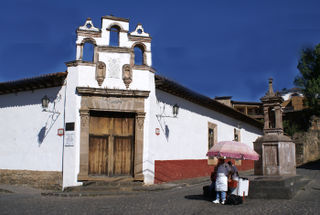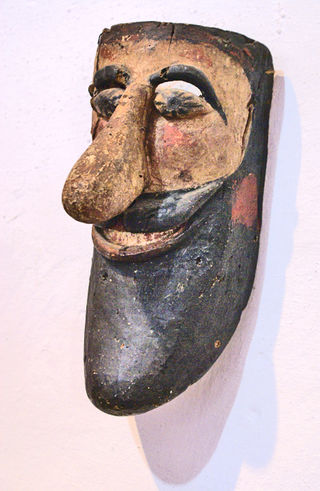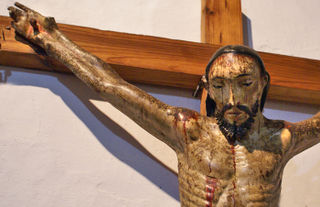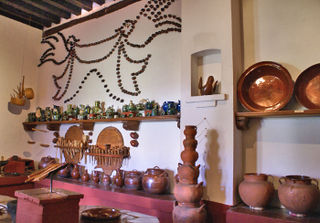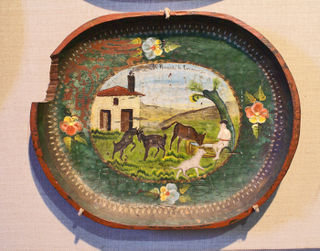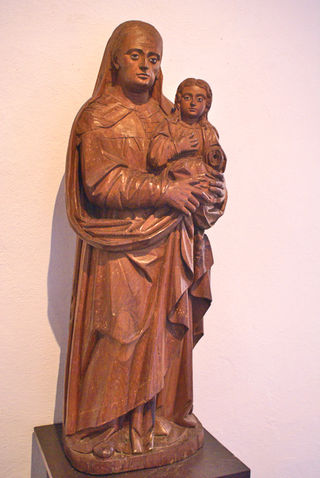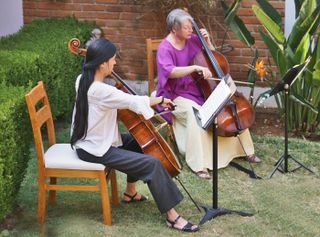
Irene Adriana Carrasco (Judy's cello teacher, foreground) and Judy, rehearsing in our garden, just before the guests arrived for Judy's mini-recital in April. It was a delightful evening spent among friends.
Living with a cello is lovely when its deep-voiced, sweet music pours out of the rehearsal room. Occasionally the tone is so beautiful that tears spring to my eyes. Living with a cello is not so lovely when the cello suddenly changes its tune, as Judy's did about six months ago. After a number of attempts to give the instrument a quick fix, she decided it needed more radical treatment. Her cello teacher, Irene Adriana Carrasco, recommended Maestro Alejandro Díaz Martínez of Violin Shop Querétaro, in the state of Querétaro, and offered to take Judy's cello to him for a consultation. A few days later, Judy and I visited Maestro Alejandro in his taller (workshop).
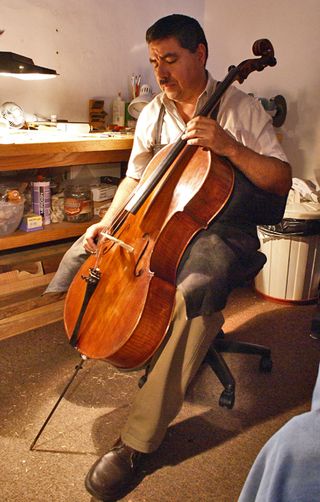
Maestro Alejandro Díaz with Judy's cello. Maestro Alejandro is a Morelia native with deep family roots here in the city.
With a twinkle in his eye, Maestro Alejandro recounted a bit of his history. "I liked the idea of studying architecture, of designing a building and watching it come to life. But I also liked studying music, especially the violin. When I was almost finished with my architectural studies, after three years at the Universidad de Michoacán de San Nicolás de Hidalgo, I had to switch. Some people thought I was crazy to quit my architectural studies when I was so close to finishing my degree, but it was something inside me that I could no longer deny: I had to study violin. It was a passion.
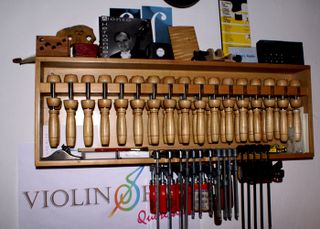
Clamps and other tools of the luthier's trade hang at the ready.
"I dropped my architectural courses and went to study violin at the Conservatorio de México in Mexico City. Fortunately my parents, the rest of my family, and my friends supported my idea. Four years of hard work were all worthwhile. I was honored to study with Arón Bitrán, one of the founders of the Cuarteto Latinoamericano. My grades were good and I loved to play, but something new was happening to me. I discovered another path, that of the laudero (luthier): building and repairing stringed instruments. It was risky to take yet another direction, but it was so fascinating! And in some ways, laudería combined my love of architecture with my love of music. It made sense to me, and once again, with the help of some friends, I made a new decision.

One of Maestro Alejandro's several work benches. It may look disorganized, but he knows exactly where to find what he needs.
"In 1985, I was studying violin for six hours a day, then studying for six hours a day at the taller de laudero (luthier's workshop) with Maestro Luthfi Becker, who specializes in Baroque instruments. I built my first violin during that same year, and I graduated in 1987 with six others, the first generación de lauderos (luthiers' graduating class) in Mexico City.
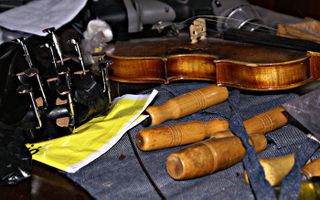
A violin in process of repair.
"In 1992, I came to Querétaro, where the Instituto de Bellas Artes in Mexico City founded the Escuela de Laudería in the mid-1950s. In 1993, I started teaching at the school, and I've been giving classes here for 16 years. I have nine students right now. They're studying the full course that leads to licenciatura (similar to a bachelor's degree) in laudería.
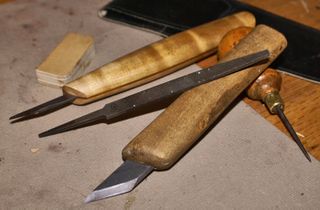
Various tools for cutting, piercing, and sanding new parts for stringed instruments.
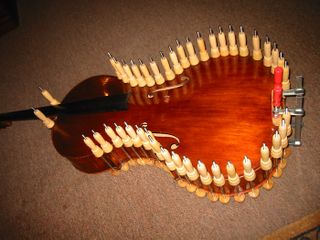
Maestro Alejandro removed the top of the cello, made and replaced the bass bar, and re-glued the top. He kept the top clamped until the glue was thoroughly dry. Photo courtesy Alejandro Díaz.
"Learning laudería requires tremendous discipline. It's not just about patching up an instrument that needs repair, using any wood you happen to have on hand. The course consists of ten semesters and includes studies in everything from the biology of wood to the history of instrument building. For example, when I looked inside Judy's cello, I could tell the age of the trees used in its construction–by the rings of the wood. I could see the type tree the wood came from, and I can tell you exactly where those trees grow. I could also approximate the age of the wood itself, when it was used to
build the cello.
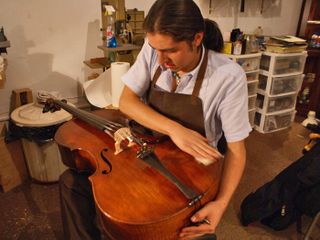
Erick Iván Díaz Garcia polishes Judy's cello. Erick has studied with Maestro Alejandro for two years. The long program of studies for luthiers at the Universidad Autónoma de Querétaro is unique in Mexico.
"One of the joys of laudería is receiving an instrument, whether an ancient violin or a late-20th Century cello like Judy's, and bringing it to its fullest expression of tone, resonance, and beauty. The instrument that still gives me chills when I think of its restoration is an 18th Century violin that came to me in dire condition. The 'stomach' of the violin was sunken, the bridge feet were dug into the top of the violin. Little by little I used my skills–traditonal skills as well as inventions that I thought up to overcome the obstacles of the violin's condition–and slowly brought the instrument back to life. The violin's owner, Cathy Meng Robinson of the Miami String Quartet, insists that the quality of the instrument since I repaired it is better than a Stradivarius violin that she owns.
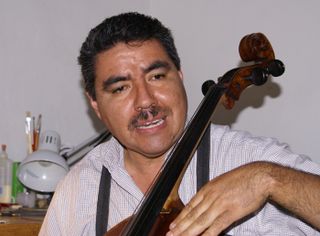
Maestro Alejandro explains a fine point of cello repair.
"Lauderos in other parts of the world–in the United States, for example–would like me to go work in their talleres, even take ownership of their workshops. But how could I? Here in Mexico, there are so few of us, maybe 100 fully trained lauderos. I have the responsibility and the joy to teach the lauderos of the future, and to rescue the instruments of the past. Here in Mexico, I have such a full life: my family, my work, my students. Compared to the fullness of my life right now, what could more money, the money people in other countries promise me for my work, give me? My son is 15; he studies violin and will soon study with me to follow in my footsteps. My daughter is only nine; her future is yet to be told. Laudería gives me the chance to know the world, from the United States to Canada to Cremona. And look–I've just begun, and already happiness fills my life."
Contact
Alejandro Díaz Martínez
Violin Shop Querétaro
Calle Ángela Peralta#19
Centro Histórico
Santiago de Querétaro, Guanajuato
Tel. 01.442.243.1488
Cel. 044.442.136.9128
Looking for a tailored-to-your-interests specialized tour in Mexico? Click here: Tours.
